Presidential Militiamen
Twenty-nine US Presidents have had at least some military experience. Of these, 14 served in a militia or National Guard unit. The information on the presidents at the came from the online encyclopedia, Grollier.com which is no longer has free access.
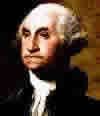 |
George Washington, our nation's first President 1789-1797, served as a Virginia Militia officer 1753-1758 and rose to the rank of Colonel. In 1753 a young Lt. Col Washington led a Virginian force in the French and Indian Wars. He defended Fort Necessity south of Pittsburgh and was compelled to surrender to a superior French force. He later served as Aide-de-Camp to the British Commanding General. |
 |
Thomas Jefferson (3rd President 1798-1809) was commissioned an officer in the Virginia Militia in 1779 and became a Colonel and regimental commander. He resigned from the militia when he was elected Governor of Virginia. |
 |
James Madison (4th President 1809-1817) was commissioned in the Virginia Militia at the outbreak of the Revolutionary War. His duties were limited to recruiting, training and internal security. The only president to actually command troops in the field under fire while president (Washington, DC, 1814). |
 |
Andrew Jackson (7th President 1828-1837), a veteran of the American Revolution, was elected a major general of the Tennessee Militia in 1802 until he entered federal service at the same rank. Commanded Militia and Regulars at the Battle of New Orleans (1815). |
 |
William Henry Harrison (9th President in 1841) was a Regular Army officer 1791-1798 and was active with the Tennessee Militia until he reentered active duty during the War of 1812. The victor of the Battle of Tippicanoe (Hence the campaign slogan: "Tippicanoe and Tyler too"). |
 |
John Tyler (10th President 1841-1845) In 1813, during the War of 1812, he served for a few months as Captain of a Virginia Militia Company raised for the defense of Richmond. |
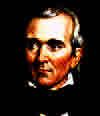 |
James K. Polk (11th President 1845-1848) was elected a captain of the Tennessee Militia in 1821 and was promoted to the rank of major before entering Congress. |
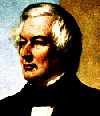 |
Millard Fillmore (13th President 1851-1853), who had never served in a military capacity before becoming President in 1851, raised a militia unit in Buffalo at the outbreak of the Civil War. The unit performed home guard, prisoner of war, and ceremonial duties. |
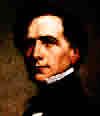 |
Franklin Pierce (14th President 1853-1857) was appointed a colonel in the New Hampshire Militia in 1831and served for several years. |
 |
James Buchanan (15th President 1857-1861) enrolled in a Pennsylvania Militia cavalry company in 1814 and saw service in the Baltimore campaign. |
 |
Abraham Lincoln (16th President 1861-1865) In April 1832 there was a call for 400 30-day volunteers for the Sangamon County State Militia, Illinois, to fight Black Hawk, war leader of the Sauk and Fox Tribes. Lincoln joined a company of friends at Richland Creek and was elected Captain. The company was enrolled in State service 28 April and federalized 9 May. The company marched up the Rock River and down to Ottawa (IL) where they were mustered out. Lincoln re-enlisted for 20 days on 29 May in a company of Mounted Independent Rangers, which was mustered out at Fort Wilbourn on the Illinois River. Lincoln again enlisted for another 30 days on 16 June 1832 in the Independent Spy Corps. The Corps made several marches into Michigan Territory (Wisconsin). On 10 July all Independent Corps were mustered out. |
 |
Chester A. Arthur (21st President 1881-1885), an officer of the New York State Militia, was appointed quartermaster general in 1861 and later inspector general of the state's military forces. During the first six months of the Civil War, he organized, equipped and dispatched to the front some 80 regiments. |
 |
Theodore Roosevelt (26th President 1901-1909) served as an officer with the 8th New York Infantry in the 1880s. |
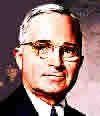 |
Harry S. Truman (33rd President 1945-1953), entered the Missouri National Guard as a private in 1905, saw active duty as a Battery Commander in France during World War I and rose to the rank of colonel in the Missouri National Guard before World War II. Senator Truman volunteered for active duty for World War II but was turned down by Army Chief of Staff General George C. Marshall, who later stated "Truman in the Senate was worth two divisions to the war effort". |
